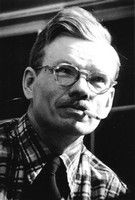
|
|
|
|
Corcoran Faculty Exhibits Its Work
Show Provides An Opportunity To Judge School's Accomplishment
An exhibition of work by the faculty of the Corcoran School of Art is now being held at the Corcoran Gallery of Art. The showing, which includes work in the several mediums of painting, sculpture, water color, prints and drawings will remain on view throughout the summer.
It is of considerable interest to have the opportunity of measuring the caliber of these serveral teachers, the faculty of the Capital's largest art school. Earlier in the year the students of the school showed as a group, and from that exhibition and the present one of the faculty members prospective pupils and the public in general can judge fairly accurately of the school's accomplishment.
It does not follow, of course, that because an artist produces interesting work himself that he is effective as a teacher, and too, a less accomplished artist may still be an excellent teacher. Teaching and the actual products of an artist are two different things. Yet such an exhibition can give certain reactions and one may have at least some feeling of the inspiration and strength of the teaching staff as a whole.
In the year two important changes have taken place in the Corcoran faculty; one is the addition to the staff of the sculptor, Robert Laurent, and the second is the recent retirement of Mathilde M. Leisenring, and the appointment in her place of Nicolai Cikovsky.
Laurent Completes First Year Here
Laurent, a sculptor of national reputation, has now completed his first year of teaching here, and Cikovsky's regular term of office will begin in the fall. The choice of Cikovsky, announced a few weeks ago, was a particularly fortunate one. This artist has not only had experience as a teacher, but has made a reputation as one of the most interesting of the contemporary American painters. Cikovsky's canvases appear in all the important national exhibitions, and his work is definitely a part of the new development of American art. His presence at the Corcoran school, together with that of Laurent, provide a progressive and stimulating new influence.
In the current exhibition Richard Lahey, principal, is among the exhibitors, as well as Eugene Weisz, vice principal, together with the other faculty members, Laurent, Cikovsky, and Kenneth Stubbs. A group of flower studies and portraits by Mrs. Leisenring, the retiring member, has also been included.
Lahey is represented not only by his oils and water colors, but by several etchings as well. A number of his pictures are familiar to Washingtonians and have been seen here before in other exhibitions. For instance, the small oil, "The Red House," was the winner of the landscape medal given this year in the annual exhibition of the Society of Washington Artists. "All's Well That Ends Well," a rather provocative figure composition, however, has not been shown here, at least within the memory of this reviewer. It is one of Lahey's most intersting oils, and has vitality and an imaginative quality.
Cikovsky's Still Lifes on View
Weisz is well known in this city, where his portraits have won him considerable honor. His "Self Portrait" in the current show is certainly one of his best accomplishments. In a limited range of blues, tans and grays, Weisz has made a simple and strong statement. His characteristic treatment is also to be seen in the examples of his work in black and white. In several drawings one may find his sweeping strokes, done here with the broad side of the pencil. Also among the black and whites is an interesting lithographic drawing, "Portuguese Cemetery," by Kenneth Stubbs. This was one of the best papers in a one-man show of this artist's work seen at the Corcoran earlier in the year.
Several of Cikovsky's still lifes are on view, including the large canvas which won the medal for still life this year at the exhibiton of the Society of Washington Artists. Another and simpler composition is "Cherries," a strong and well unified study. Less interesting is his "Candewood Lake," an almost Dufy-like landscape.
Cikovsky's sturdy portrait of "Sylvie," however, is a monumental and triangular composition, and is worth a close inspection. The charcoal drawings by Cikovsky, "Waterfront" and "Playground," give further proof of his vitality as an artist. In the latter, particularly, one feels his live and sensitive line, and has a sense of the quick sketch which comes off and is right.
Alice Graeme, Washington Post, June 9, 1940, page L7
|
|
|
|

